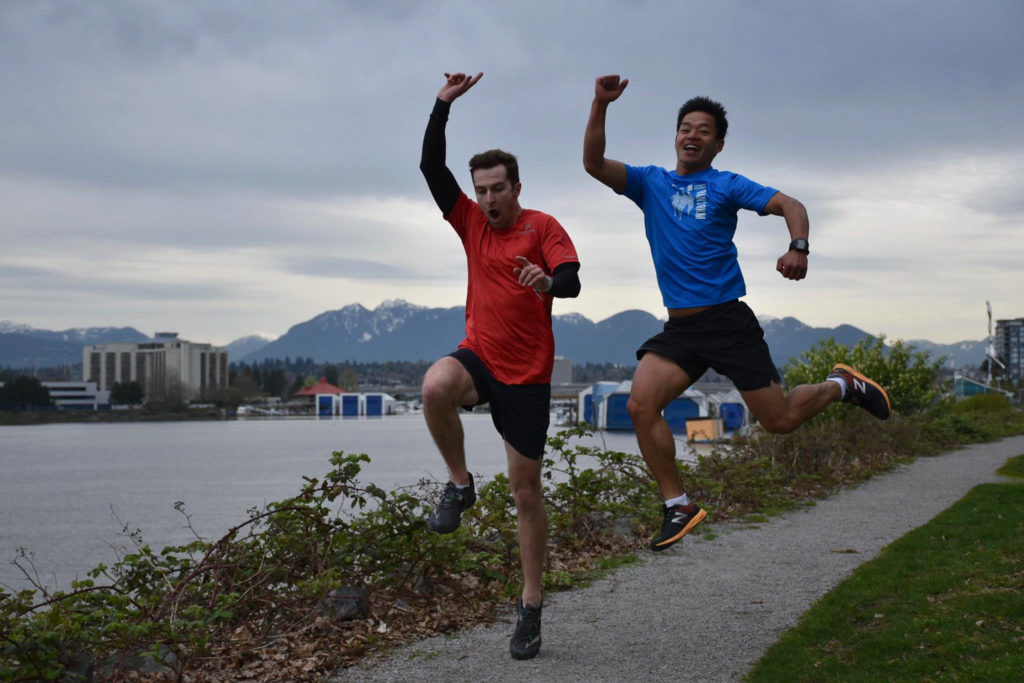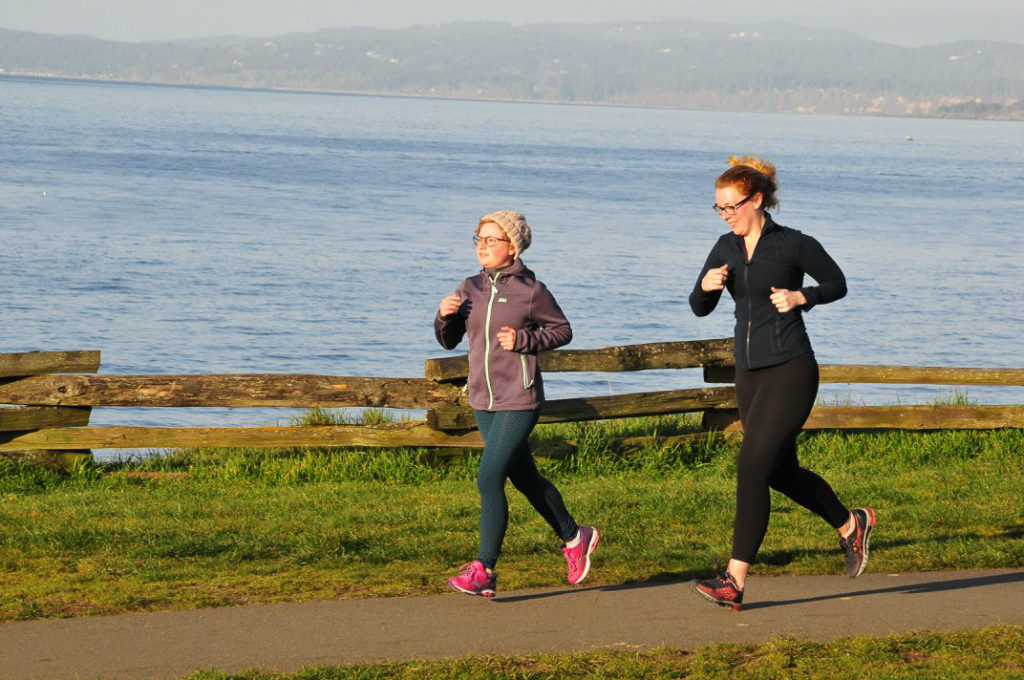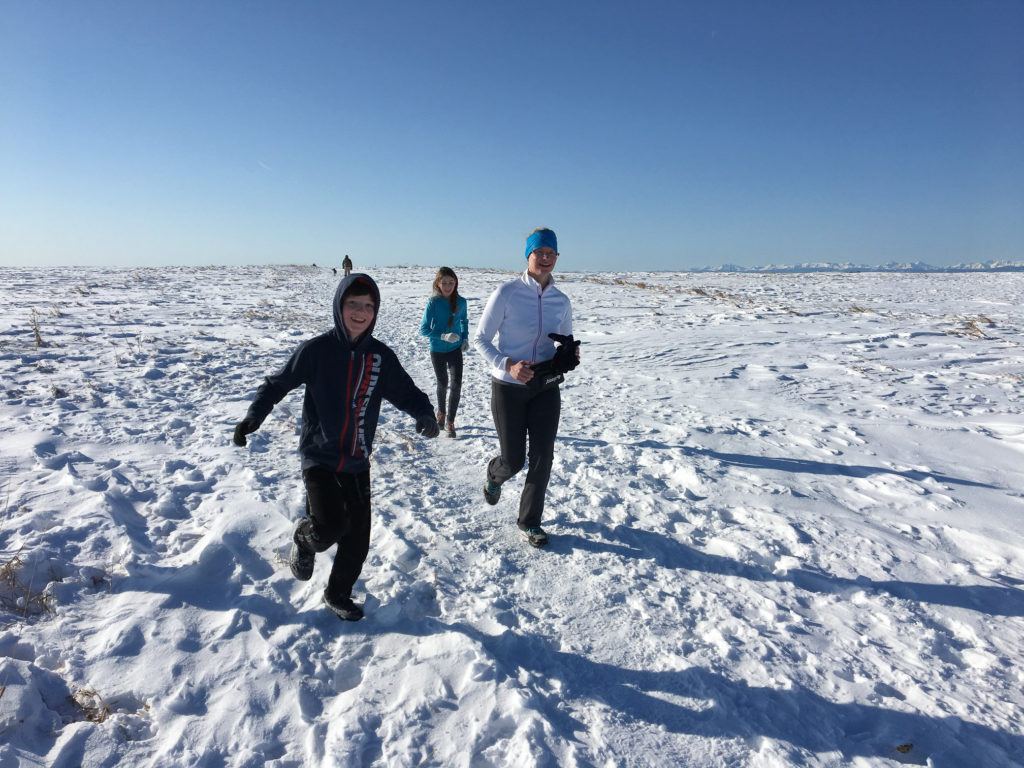Parkrun is a global sensation that’s making its way through Canada, and its success boils down to one thing: community.
In 2014, Paul Sinton-Hewitt was injured and unemployed. Disconnected from his livelihood and his passion, Paul needed to find a way to do the thing he loved—to whatever extent his injury would let him—and find company that would remind him that brighter days were ahead.
In October of that year, Paul invited anyone who cared to join him on a Saturday morning in London’s Bushy Park for a 5K run. There were, however, conditions. First, it wasn’t a race. Everyone would tackle the distance in whatever way suited them, wearing whatever suited them. Second, everyone was invited to congregate afterward at a nearby cafe for coffee and a natter.
Thirteen showed up for that first run in Bushy Park. Now, hundreds of thousands of runners show up to over a thousand parks across 20 countries every Saturday morning for a timed 5K followed by coffee.

Parkrun has grown so significantly that its organizational structure resembles a Fortune 500 company more than it might a ragtag group of friends running in a park. Sponsored by Saucony—who picks up all the operational costs, making the event entirely free for runners—the brand says its mission is to inspire all runners, and create unbelievable running experiences.
Somewhere in the hierarchy is Euan Bowman, a native of Perth, Scotland—the gateway to the Highlands, as Bowman says the locals know it—now living in Vancouver and acting as the national manager for parkrun Canada.
Bowman breaks the operation down meticulously. The head offices are in London and Leeds. “The whole operation is overseen by a CEO and a COO,” he explains. “From there, we have a network of support staff in the UK that runs parallel to a health and well-being team, which is critical because they think of ways to get more people involved. There are now junior parkruns and prison parkruns.”
On the ground, there are event ambassadors, race directors, timers and volunteers making more than a thousand parkruns happen every week.
Regarding his role, Euan says, “I look after the growth and operations and support for the Canadian events. On a typical day, I receive new event inquiries and we will speak to them and support them in putting on an event.”

He adds, “When you have communities of people, things happen and we don’t just show up and run. We have appropriate insurance and permits everywhere we run.” parkrun has grown astronomically, but Euan is crucial to making sure that it’s original spirit and integrity maintains throughout that growth.
Bowman is sure to emphasize that as the movement grows, “parkrun is first and foremost a community initiative. It just so happens that running is a great way to make the world a happier and healthier place, so we organize these weekly timed runs. What we’re ultimately trying to do, though, is get people outside and socializing, so we do our best to remove the perceived pressure that sometimes comes with races and run clubs.”
“We think,” Bowman continues, “that with run clubs we perhaps won’t fit in. We try to create a place for everyone. Volunteers and spectators are always welcome too, and they get just as much enjoyment out of it as our runners.” When it comes to participating, Bowman says, “If you show up, you can run with your dog or your stroller. There’s no judgement here.”
“We’re all about removing barriers,” Bowman proclaims.
Indeed, green is good for us. Connecting to our parks and trails is an incredible boon to our physical and mental health. Connecting to our neighbours and building friendships and a community of support is good for us too. We’re social creatures and parkrun keeps that fact as its modus operandi. Combine that with the purpose, pleasure and health benefits that running itself provides and you have a pretty magical formula.
Those things, however, are often easier said than done. Many of us struggle to establish a consistent fitness routine and struggle just as much to make time to be social and get outside. It’s no knock on our individual character. We’re busy trying to make ends meet. We’d like to run and meet new people, but races can be expensive and have to work with our existing schedule.
As Bowman breaks down how one gets to their first parkrun, he makes it clear that the whole operation has been structured to take away some of those barriers.
“parkrun asks that you register only once,” Bowman begins. “Thanks to Saucony, it’s completely free. You’re given a barcode that you can print out and keep handy. Then, you’re in for life.” That means no kit pickup!
Bowman continues, “You can go to the parkrun website and find an event near you. They’re all on Saturday morning and you don’t have to tell us you’re coming. Just show up and have your barcode handy, whether in your pocket, bag or car. There’s no need to run with it.”
Once you’ve completed your race on a measured course, your time is captured. Bowman explains, “We’ll give you a token with a number that matches your finishing place and the corresponding time. Then you’ll bring us your barcode and we can match it to your token, so you can be emailed a result. Then it’s coffee!”
Same place, same time every week, with only one free registration required.
That barcode doesn’t just get you to your local race. If you happen to find yourself in Helsinki, Paris, Copenhagen or Eswatini, Swaziland, make sure that barcode comes with you because it’s valid at every local parkrun across the globe—a passport to land anywhere and experience its parks and people through running.
Bowman himself knows the experience of finding himself in a new place and trying to find a sense of community. “Even on the days I wake up in a bad mood, that’s done by the time parkrun is over.”
Beyond the big cities, where the reach of the current running boom is visible in the relentlessly growing number of run crews, independent running shops and packed calendar of races, parkrun has leveraged its model of simplicity to give running a foothold beyond the metropolis.

In North Bay, 360 kilometres north of Toronto, winter still brings out a handful of the hardiest runners to trudge through the accumulation at Veteran’s Field. This summer, parkrun Fort McMurray launches at Syne Point Park, a seven-hour drive north of Calgary.
North Bay Event Director David Holloway says, “Although there are some other runners in North Bay, there are few races, so for people who want to test their fitness and get a time, parkrun is the ideal place to go for a fast time.” Even when the temperatures drop to -43, “The most satisfying thing is that we have many people who come out just to keep fit and are not necessarily fast runners. It’s a family activity.”
Back on the other side of the Atlantic, Bushy Park has seen weekly participation go from 13 to 1200. The Lower Drummans parkrun attracts perhaps ten runners to run alongside the inmates of Magilligan Prison near Limavady (population 12,000), Londonderry County, Northern Ireland. But they do show up, and ten is more than enough for connection, and any connection offsets isolation.
“Go to parkrun and you’ll find friends,” is Bowman’s simple pitch.
Saucony is committed to growing parkrun across the country. Access to sport and the freedom in being able to move outdoors is the beating heart of the brand. parkun, by making the sport of running more accessible, makes it all possible, even if just for a Saturday morning.
To find the nearest parkrun event near you, or to start your own parkrun wherever you are in Canada, please see parkrun.ca.






 Our Magazine
Our Magazine Previous Release
Previous Release
